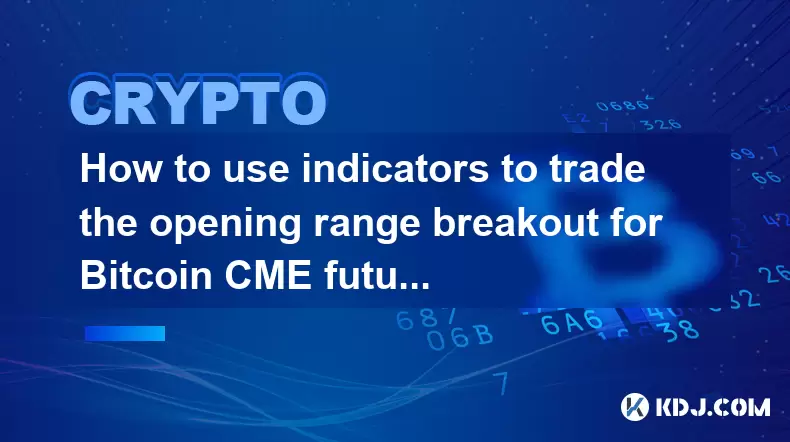-
 Bitcoin
Bitcoin $118600
0.36% -
 Ethereum
Ethereum $3855
1.06% -
 XRP
XRP $3.195
-0.09% -
 Tether USDt
Tether USDt $1.000
-0.04% -
 BNB
BNB $844.5
6.23% -
 Solana
Solana $191.3
2.83% -
 USDC
USDC $0.9997
-0.01% -
 Dogecoin
Dogecoin $0.2376
0.10% -
 TRON
TRON $0.3242
0.83% -
 Cardano
Cardano $0.8222
0.13% -
 Hyperliquid
Hyperliquid $45.26
6.53% -
 Sui
Sui $4.200
-2.56% -
 Stellar
Stellar $0.4336
-1.24% -
 Chainlink
Chainlink $18.86
0.28% -
 Hedera
Hedera $0.2796
-1.75% -
 Bitcoin Cash
Bitcoin Cash $583.3
-1.84% -
 Avalanche
Avalanche $27.06
8.09% -
 Litecoin
Litecoin $112.3
-1.16% -
 Toncoin
Toncoin $3.353
0.58% -
 UNUS SED LEO
UNUS SED LEO $8.968
-0.11% -
 Shiba Inu
Shiba Inu $0.00001395
-0.54% -
 Ethena USDe
Ethena USDe $1.001
-0.03% -
 Uniswap
Uniswap $10.76
0.69% -
 Polkadot
Polkadot $4.175
0.26% -
 Monero
Monero $326.7
1.07% -
 Bitget Token
Bitget Token $4.665
1.61% -
 Dai
Dai $0.9998
-0.02% -
 Pepe
Pepe $0.00001271
0.32% -
 Cronos
Cronos $0.1416
2.01% -
 Aave
Aave $299.3
1.15%
Analyze the Operating Principles of Bitcoin Quantitative Trading in One Article
Bitcoin quantitative trading uses data-driven algorithms to capitalize on market trends, requiring robust data analysis, model development, and risk management strategies.
May 28, 2025 at 08:14 am

Bitcoin quantitative trading has become an increasingly popular method for traders to capitalize on the volatility and potential profits in the cryptocurrency market. This article delves into the operating principles of Bitcoin quantitative trading, exploring its mechanisms, strategies, and the technology that drives it.
What is Bitcoin Quantitative Trading?
Bitcoin quantitative trading is the use of mathematical models and algorithms to make trading decisions in the Bitcoin market. Unlike traditional trading, which often relies on human intuition and analysis, quantitative trading uses data-driven strategies to identify and execute trades. These strategies are typically developed by analyzing historical data to uncover patterns and trends that can be exploited for profit.
Quantitative trading in the Bitcoin market involves several key components, including data collection, model development, backtesting, and execution. Each of these components plays a crucial role in the overall success of a quantitative trading strategy.
Data Collection and Analysis
The foundation of any quantitative trading strategy is data. In the context of Bitcoin, this includes historical price data, trading volumes, order book data, and other market indicators. Traders collect this data from various sources, including cryptocurrency exchanges, data providers, and blockchain explorers.
Once the data is collected, it undergoes a process of cleaning and normalization to ensure its accuracy and usability. This step is crucial because the quality of the data directly impacts the performance of the trading model. After cleaning, the data is analyzed to identify patterns and correlations that can be used to develop trading strategies.
Model Development
Developing a quantitative trading model involves creating mathematical algorithms that can predict future price movements based on historical data. These models can range from simple statistical models to complex machine learning algorithms. The choice of model depends on the trader's goals, the available data, and the desired level of complexity.
Statistical models often use techniques like regression analysis, time series analysis, and moving averages to identify trends and make predictions. Machine learning models, on the other hand, can learn from large datasets and adapt to changing market conditions. These models include decision trees, neural networks, and support vector machines.
Backtesting and Optimization
Before a trading model is deployed in the live market, it must be backtested using historical data. Backtesting involves running the model on past data to see how it would have performed if it had been used to make trading decisions at that time. This process helps traders identify potential weaknesses and areas for improvement.
Optimization is the process of fine-tuning the model to maximize its performance. This can involve adjusting parameters, testing different combinations of indicators, and refining the algorithm to better fit the data. Optimization is an iterative process that requires careful analysis and testing to ensure the model's robustness.
Execution and Risk Management
Once a trading model has been developed and backtested, it can be deployed in the live market. Execution involves using the model to generate buy and sell signals and then executing trades based on those signals. This process is often automated using trading bots or algorithmic trading platforms.
Risk management is a critical aspect of quantitative trading. Traders must implement strategies to manage their exposure to risk, such as setting stop-loss orders, diversifying their portfolio, and monitoring their positions in real-time. Effective risk management helps traders minimize losses and protect their capital.
Common Strategies in Bitcoin Quantitative Trading
There are several common strategies used in Bitcoin quantitative trading, each with its own approach and set of rules. Some of the most popular strategies include:
Trend Following: This strategy involves identifying and following the direction of the market trend. Traders use indicators like moving averages and trend lines to determine the trend and make trading decisions based on its direction.
Mean Reversion: This strategy is based on the idea that prices will eventually return to their mean or average value. Traders look for opportunities to buy when prices are low and sell when prices are high, capitalizing on the expected reversion to the mean.
Arbitrage: Arbitrage involves taking advantage of price differences between different markets or exchanges. Traders buy Bitcoin on one exchange where the price is low and sell it on another exchange where the price is higher, profiting from the price discrepancy.
Market Making: Market makers provide liquidity to the market by placing buy and sell orders at different price levels. They profit from the spread between the buy and sell prices and help maintain market stability.
Technology and Tools
Quantitative trading in the Bitcoin market relies heavily on technology and tools. These include:
Algorithmic Trading Platforms: Platforms like MetaTrader, TradingView, and Cryptohopper allow traders to develop, backtest, and execute trading strategies. They provide access to real-time data, charting tools, and automation features.
APIs: Application Programming Interfaces (APIs) enable traders to access data and execute trades programmatically. Many exchanges offer APIs that allow traders to integrate their trading models with the exchange's systems.
Data Feeds: Reliable data feeds are essential for quantitative trading. Services like CoinAPI, CryptoCompare, and CoinGecko provide real-time and historical data that traders can use to develop and backtest their models.
Cloud Computing: Cloud computing services like Amazon Web Services (AWS) and Google Cloud Platform (GCP) provide the computing power and storage needed to run complex trading models and analyze large datasets.
Challenges and Considerations
While Bitcoin quantitative trading offers the potential for significant profits, it also comes with several challenges and considerations. These include:
Market Volatility: The Bitcoin market is known for its high volatility, which can lead to rapid price swings and increased risk. Traders must be prepared to adapt their strategies to changing market conditions.
Regulatory Uncertainty: The regulatory environment for cryptocurrencies is constantly evolving, and changes in regulations can impact the profitability and legality of certain trading strategies.
Technical Complexity: Developing and maintaining a quantitative trading model requires a high level of technical expertise. Traders must have a strong understanding of mathematics, statistics, and programming to succeed in this field.
Data Quality: The accuracy and reliability of the data used to develop trading models are crucial. Poor data quality can lead to inaccurate predictions and poor trading performance.
Frequently Asked Questions
Q: How much capital is required to start Bitcoin quantitative trading?
A: The amount of capital required to start Bitcoin quantitative trading can vary widely depending on the trader's strategy and risk tolerance. Some traders may start with as little as a few hundred dollars, while others may require tens of thousands of dollars to implement their strategies effectively. It's important to start with an amount that you can afford to lose, as quantitative trading carries inherent risks.
Q: Can I use existing software for Bitcoin quantitative trading, or do I need to develop my own?
A: Both options are viable. There are numerous existing software solutions and platforms, such as MetaTrader and Cryptohopper, that offer pre-built tools and algorithms for quantitative trading. These can be a good starting point for beginners. However, more advanced traders may prefer to develop their own custom models and algorithms to better fit their specific trading strategies and goals.
Q: How important is real-time data in Bitcoin quantitative trading?
A: Real-time data is crucial for Bitcoin quantitative trading, especially for strategies that rely on short-term price movements and market conditions. Having access to up-to-date information allows traders to make more informed decisions and react quickly to market changes. However, the importance of real-time data can vary depending on the specific trading strategy being employed.
Q: What are the risks associated with using leverage in Bitcoin quantitative trading?
A: Using leverage in Bitcoin quantitative trading can amplify both gains and losses. While leverage can increase potential profits, it also increases the risk of significant losses, especially in a highly volatile market like Bitcoin. Traders must carefully manage their leverage and have a solid risk management strategy in place to mitigate these risks.
Disclaimer:info@kdj.com
The information provided is not trading advice. kdj.com does not assume any responsibility for any investments made based on the information provided in this article. Cryptocurrencies are highly volatile and it is highly recommended that you invest with caution after thorough research!
If you believe that the content used on this website infringes your copyright, please contact us immediately (info@kdj.com) and we will delete it promptly.
- Crypto Investments, Dogecoin Substitutes, and Wealthy Returns: Navigating the Meme Coin Mania and Beyond
- 2025-07-29 00:30:13
- Week Review: July 21 - July 27 - Crypto, AI, and Trade Deals, Oh My!
- 2025-07-29 00:30:13
- Bitcoin, Gold, and Debt Hedges: A New Yorker's Take
- 2025-07-29 00:50:12
- Bitcoin, Japan, Metaplanet: A New Era of Corporate Crypto Adoption?
- 2025-07-29 00:50:12
- Bitcoin Bonanza in Japan: Metaplanet Leads the Charge
- 2025-07-29 00:55:23
- Bitcoin, Merger, and ProCap Financial: A New Era for Crypto in Traditional Finance
- 2025-07-29 00:55:23
Related knowledge

What is the significance of the 21-week EMA in a Bitcoin bull market?
Jul 10,2025 at 06:56pm
Understanding the 21-Week EMA in Cryptocurrency AnalysisThe 21-week Exponential Moving Average (EMA) is a technical indicator widely used by traders a...

How to identify a volatility contraction pattern on Bitcoin using indicators?
Jul 07,2025 at 07:28am
What is a Volatility Contraction Pattern in Bitcoin Trading?A volatility contraction pattern refers to a phase where the price movement of an asset, s...

Do indicators work better on a logarithmic or linear scale for Bitcoin's long-term chart?
Jul 08,2025 at 01:42pm
Understanding Chart Scales in Cryptocurrency TradingIn cryptocurrency trading, particularly for analyzing Bitcoin's long-term trends, chart scales pla...

What is the Woodies CCI indicator and can it be used for Bitcoin?
Jul 04,2025 at 05:14pm
Understanding the Woodies CCI IndicatorThe Woodies CCI indicator is a variation of the traditional Commodity Channel Index (CCI), which was originally...

How to use indicators to trade the opening range breakout for Bitcoin CME futures?
Jul 05,2025 at 07:35pm
What Is the Opening Range Breakout Strategy?The opening range breakout (ORB) strategy is a popular trading technique used in both traditional markets ...

How to use the Relative Vigor Index (RVI) for Bitcoin trading?
Jul 07,2025 at 02:00pm
Understanding the Relative Vigor Index (RVI)The Relative Vigor Index (RVI) is a technical analysis tool used to assess the strength of price movements...

What is the significance of the 21-week EMA in a Bitcoin bull market?
Jul 10,2025 at 06:56pm
Understanding the 21-Week EMA in Cryptocurrency AnalysisThe 21-week Exponential Moving Average (EMA) is a technical indicator widely used by traders a...

How to identify a volatility contraction pattern on Bitcoin using indicators?
Jul 07,2025 at 07:28am
What is a Volatility Contraction Pattern in Bitcoin Trading?A volatility contraction pattern refers to a phase where the price movement of an asset, s...

Do indicators work better on a logarithmic or linear scale for Bitcoin's long-term chart?
Jul 08,2025 at 01:42pm
Understanding Chart Scales in Cryptocurrency TradingIn cryptocurrency trading, particularly for analyzing Bitcoin's long-term trends, chart scales pla...

What is the Woodies CCI indicator and can it be used for Bitcoin?
Jul 04,2025 at 05:14pm
Understanding the Woodies CCI IndicatorThe Woodies CCI indicator is a variation of the traditional Commodity Channel Index (CCI), which was originally...

How to use indicators to trade the opening range breakout for Bitcoin CME futures?
Jul 05,2025 at 07:35pm
What Is the Opening Range Breakout Strategy?The opening range breakout (ORB) strategy is a popular trading technique used in both traditional markets ...

How to use the Relative Vigor Index (RVI) for Bitcoin trading?
Jul 07,2025 at 02:00pm
Understanding the Relative Vigor Index (RVI)The Relative Vigor Index (RVI) is a technical analysis tool used to assess the strength of price movements...
See all articles

























































































